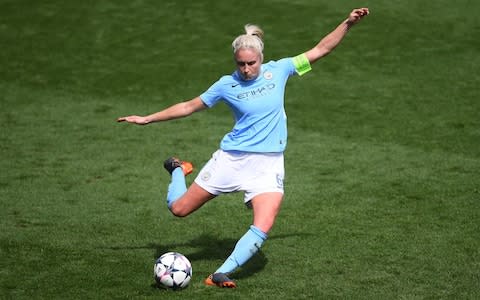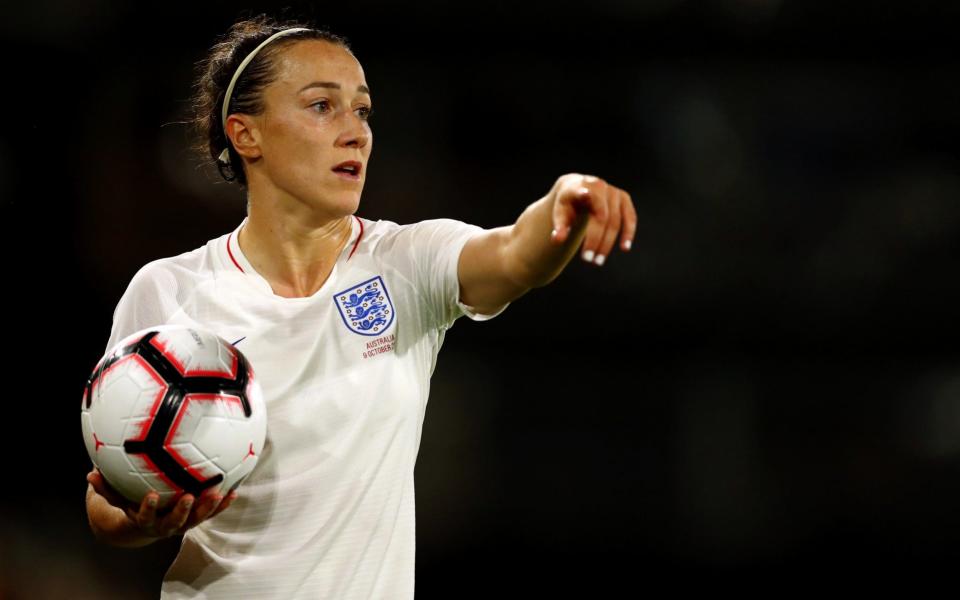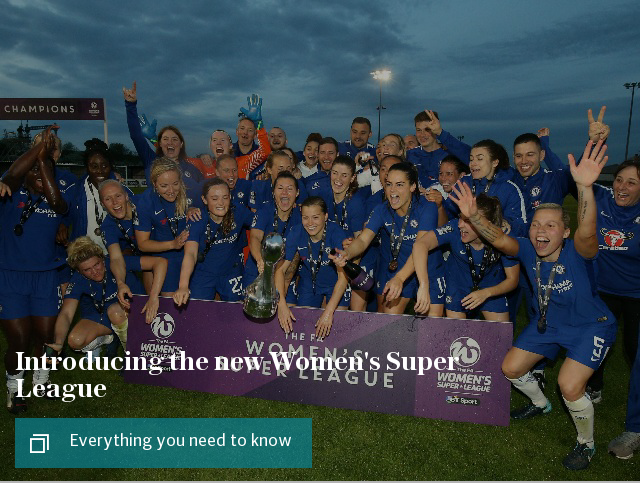Lucy Bronze, Steph Houghton and others prove north-east is a hot bed of talent - but dearth of top-level clubs a worry
To speak to any of the former coaches from Sunderland Ladies’ Centre of Excellence is to listen to people who coached Lyon’s Lucy Bronze when she was an introverted twelve-year-old who would train with her glasses on either side of a 60 mile commute from Alnwick.
Women's Ballon d'Or nominee Bronze, now 26 and widely regarded as the best right back in the women’s game, is far from the only current England player to have passed through Sunderland’s ranks en route to the top of the game. Steph Houghton, the current Manchester City and England captain, is another.
Arsenal captain Jordan Nobbs, who joined Sunderland’s Centre of Excellence aged nine, recalls so fondly the days growing up on Wearside that, in Arsenal's programme from their 6-0 win over Reading last Sunday, she remembered the weekends of representing an all-girls Sunderland team in an all-boys league as “some of the best football” of her career.
READ MORE: How Simone Biles came to wield incomparable influence
READ MORE: Payet argument my fault, says Marseille's Rami
READ MORE: Muller and Boateng must earn Bayern return, says Kovac
So strong was Sunderland’s influence that six of the 23 members of Mark Sampson’s squad for Euro 2017 had grown up playing on Wearside. No other club came close to rivalling the Black Cats’ numerical influence - to a certain extent, perhaps Sunderland will always be the closest thing the women’s game has to a Class of 92.
These days, though, Sunderland Ladies are doing a commendable job of picking up the pieces in the FA Women’s National League Northern Premier Division, the third tier of women’s football in England, after years of consternation and hand-wringing. For a while, it had been good: they finished seventh in WSL 1 last season and won the top-division title consecutively from 2010-11 to 2012-13, all the while churning out scores of future national team players.

How, then, did it come to this? The Ladies’ male counterparts, of course, have lumbered through the last few years like Sideshow Bob thwacking his way through a yard of rakes, and it is only now, under new ownership two years after their relegation from the top flight having hit every fold and corner on the slide down, that they resemble anything approaching stable. Laden, at one point, with debts totalling £110 million, it was the job of the club’s chief executive, Martin Bain, to oversee so many redundancies there was once a point where the job title on his Wikipedia page had been edited to read “the grim-reaper of the club”.
The women’s side were among a number of the club’s earliest casualties, and were increasingly ostracised. In September last year, Sunderland Ladies lost access to first-team facilities at the Academy of Light, relocating to facilities in a suburb of, ahem, Newcastle. They switched from a full-time model to a part-time model. At the same time, the FA announced plans for a fully-professional top tier, commencing 2018-19, that demanded all players train full-time and applicants be “assessed by a panel of experts across a range of fields including finance, marketing and commercial, facilities, player development, coaching and performance” before admission.
Sunderland’s application for the top tier, the Women’s Super League, was rejected. Their application for the second tier, the Women’s Championship, was rejected. Their appeal for either was then rejected. Hence, they find themselves at rung three, despite their finish the previous campaign.
All of that means the most northern club in the top tier is (drumroll) Manchester City. The North-East covers more than 3,000 square miles, but there is not one team from the top two leagues in Tyneside or Wearside. There is one club, Durham, serving the whole of the North-East. There is a smattering of Regional Talent Centres, but it still feels like a huge opportunity missed.
As Bronze, now a Champions League winner, tweeted in May: “I understand the dream has just got a lot harder for the girls and parents in the north east… but don’t stop, you are just going to have to work a little harder than everyone else, to get to where you want to be… 15 years later, when you have a Champions League medal round your neck, you’ll look back and thank them for giving you the fight you needed to succeed.”
But trust me, 15 years later when you have a Champions League medal round your neck, you’ll look back and thank them for giving you the fight you needed to succeed ����
— Lucy Bronze (@LucyBronze) May 28, 2018
This is one of the caveats of a league tending increasingly towards partnerships with men’s clubs to fund women’s teams that are not yet profitable. A full-time league is a necessity if, as is their aim, the national side, along with the likes of Arsenal, Chelsea and Manchester City, are to become the best in the world. The result is a high-stake, buy-in league, where clubs need to prove they are willing to support a team.
Where this falls down is that the support is not always forthcoming - as Sunderland and Notts County, perhaps the game’s most high-profile victim after they were disbanded two days before they were due to play Arsenal at the start of the WSL Spring Series in 2017, have discovered to their peril. When costs need to be cut, the women’s team is always the first thing to go. Without fully-independent women’s teams, or unwavering, unequivocal commitment from men’s sides, women’s clubs will always be uncomfortably wary of their own mortality.
What that means for the sustainability of women’s football in England, long-term, is uncertain. It would be illogical for the big spenders in Arsenal, Chelsea and Manchester City, often handsomely reimbursed for their investment, to pull the plug now - but the situation is more precarious for those further down the pyramid.
For now, at least, the scars of Sunderland’s relegation to the third tier are beginning to heal and they currently top the table in their league. The loss of their legacy, though, still rankles for many on Wearside, many of whom were volunteers who invested years of their lives into turning the Black Cats into a force in the women’s game.
Sunderland can take hope in the words of new owner Stewart Donald, who, to his credit, has insisted “the Ladies team is an important part of our Sunderland family”. Sunderland Ladies have since returned to the Academy of Light for training, but their longer-term future remains unclear. If Sunderland are to reach, and compete, in a league that now demands a huge commitment from its clubs, they will in all likelihood need to command better treatment from the powers that be than they have been subjected to of late.

 Yahoo Sport
Yahoo Sport 







































